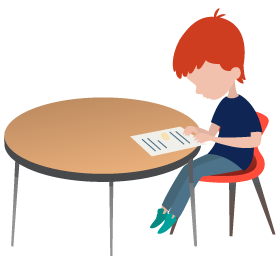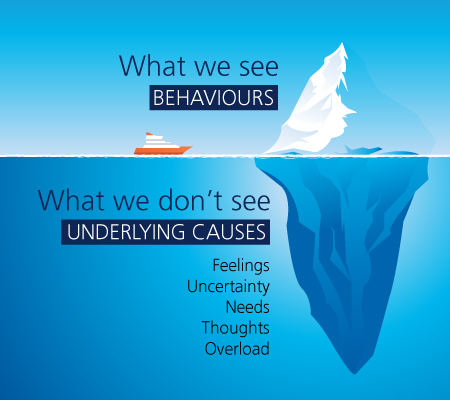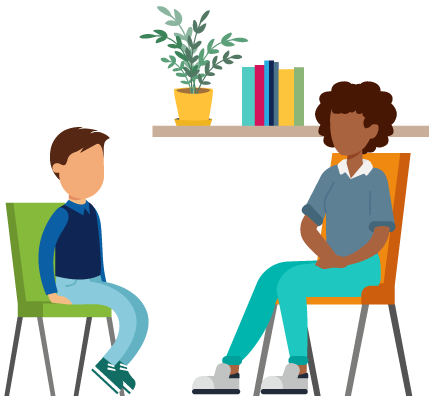Practical support for identifying and meeting need
What are SEMH needs?
We all have mental health. Mental health can change and fluctuate depending on circumstances and experiences. The World Health Organisation describes emotional and mental health as ‘a state of well-being in which every individual realises his or her own potential, can cope with the normal stresses of life, can work productively… and is able to make a contribution to her or his community’.
When we talk about children and young people having ‘emotional and mental health needs’, we usually mean children and young people who do not feel they can cope with life and/or enjoy things, and who may not be able to achieve their potential in learning and developing. The SEN Code of Practice 2015 also adds the word ‘social’ to this definition, to include that sometimes feelings and behaviours in children and young people are linked to their ‘social’ life: what’s going on in their family, with their friends, and in the community they live in.
When we consider SEMH it is helpful to have a systemic perspective and consider wider influences in the child or young person’s home and school life which may impact on their mental health.
Social and emotional skills help children and young people to:
- identify and manage their feelings and their behaviour, and reach out for help where necessary
- build and manage healthy relationships
- have self-control
- resolve conflict
- be self-aware
- handle and overcome difficulties
- make good decisions
- build resilience, self-esteem and confidence
- think positively about themselves and how they perceive the world around them
- recognise and prevent poor mental health
- grow into well-rounded and healthy adults.
How might SEMH needs arise?
SEMH needs can sometimes arise from neurodevelopmental needs, for example: attention deficit hyperactivity disorder (ADHD); Tourette’s syndrome; and aspects of autism.
SEMH needs are often systemic in nature and based on a child or young person’s experiences and how these have been responded to and supported by others. Some children may have experienced adverse childhood experiences (ACEs)* which, depending on support systems and prevalence, can increase stress and stress responses. There are other experiences such as bereavement, loss, health needs and traumatic events which can impact on wellbeing and these can be ongoing for several years after a particular event.
Types of childhood adversity
Abuse
Physical
Emotional
Sexual
Neglect
Physical
Emotional
Household dysfunction
Incarcerated relative
Divorce
Parent treated violently
Substance abuse
Mental illness
Some children may have experienced inconsistent parenting and a lack of empathy and attunement in their early years. This can impact on attachments and relationships with others.
In the absence of early identification and preventative measures, these experiences can have a long term impact on mental health and result in:
- a specific mental health need, for example: anxiety; eating disorder; depression
- a social, emotional and behaviour need, for example: needing support with emotional regulation; accepting boundaries and relating to others
What is the relationship between behaviour and SEMH?
When children and young people persistently behave in a challenging way this is often a way of communicating that something is wrong. It is a sign that they are dysregulated or in distress.
Some children and young people get stuck in patterns of challenging behaviour and struggle to develop strategies they can use to feel calmer. It can be difficult for a child or young person to change their coping strategies when the circumstances and needs behind their behaviours remain the same.
Children and young people need to have coping behaviours modelled and supported by empathetic and attuned or ‘emotionally available’ adults.
All behaviour is communication. When presented with a clear behavioural response it can help to be curious, take a step back and ask yourself:
What is this telling me?
What are the emotions?
What are the child or young person’s needs?
What environmental factors are contributing?
Understanding SEMH needs and behaviours
It can help to keep a reflective log of behaviours so that, by a process of analysis, key adults can start to understand underlying emotional needs and triggers. For example a STAR observation chart. STAR stands for Setting, Trigger, Analysis and Result.
It is most helpful if reflective logs are used to inform practice rather than being a negative log of poor behaviours which are relayed to the child or young person and family, further inducing feelings of anger and low self-worth.
SEMH assessment tools can help to explore social and emotional needs in more depth. Examples include the Boxall Profile and Strengths and Difficulties Questionnaire (SDQ).






